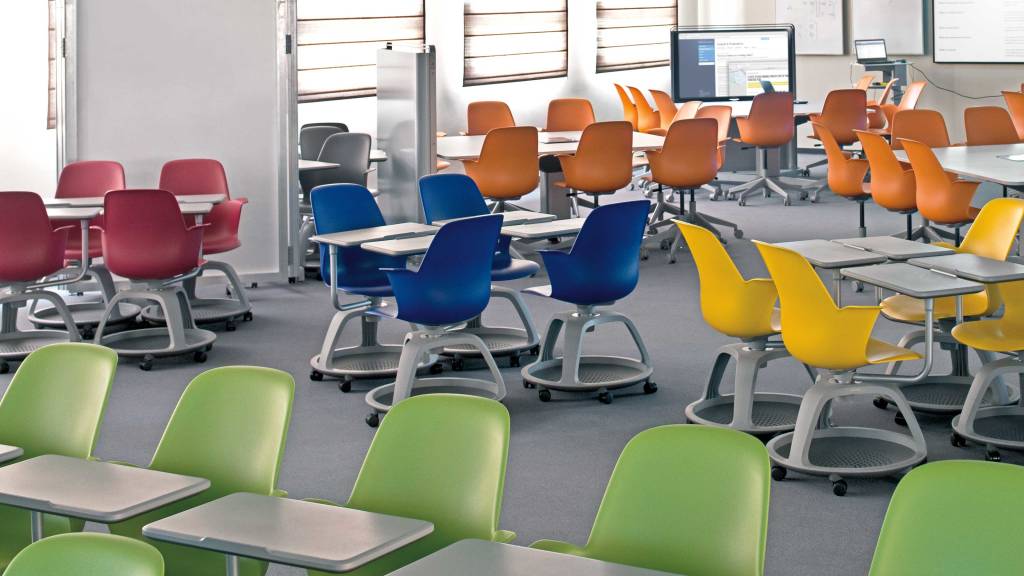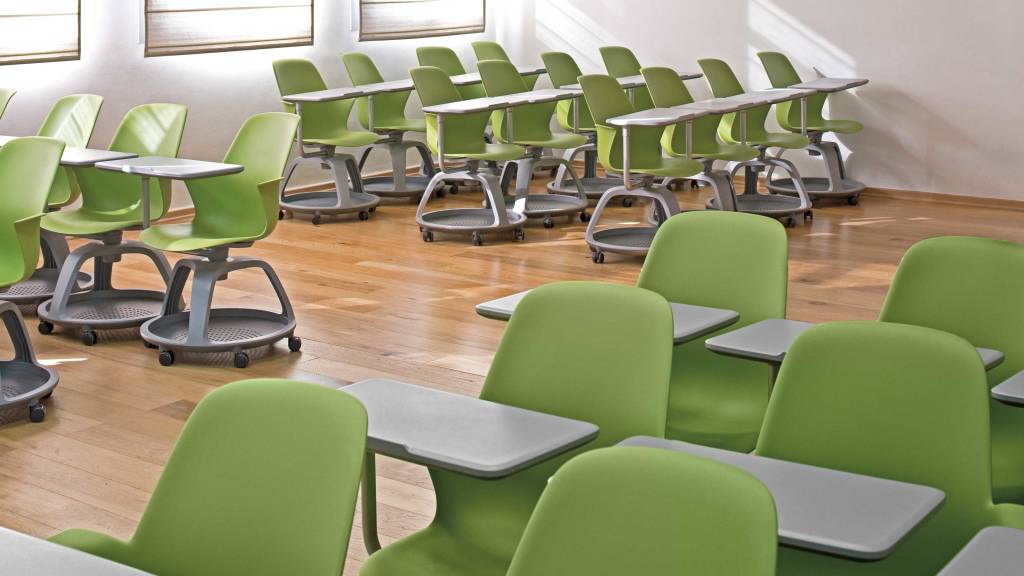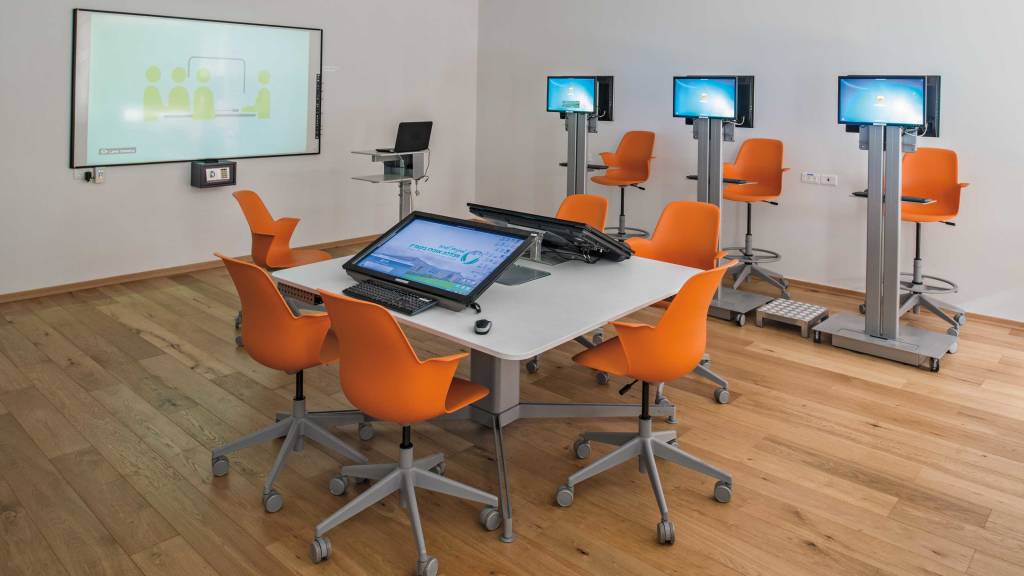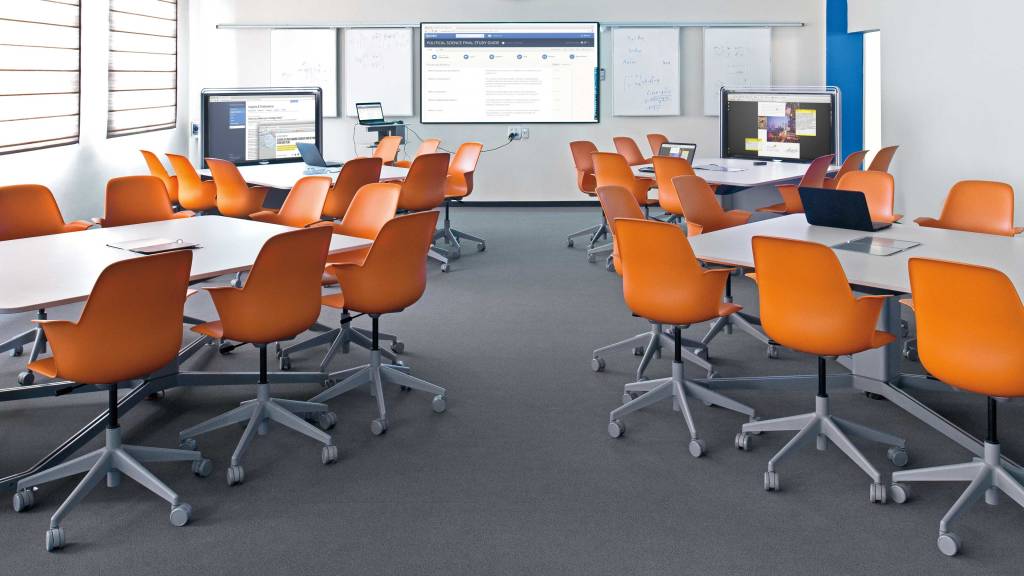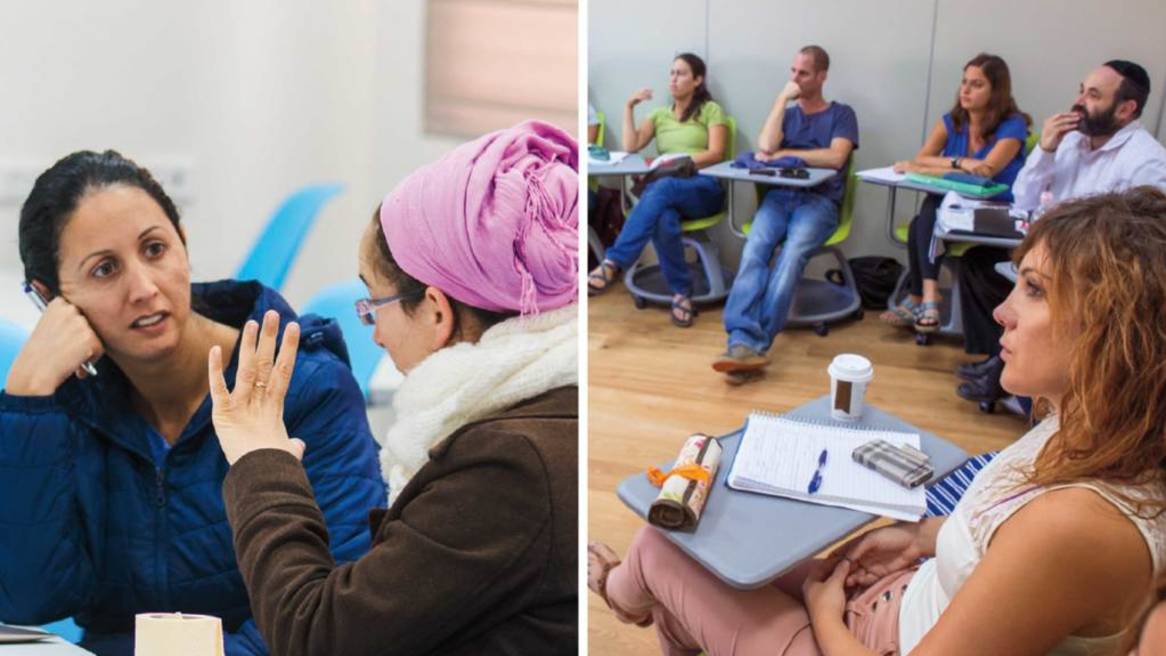Teaching the Teachers
Israeli Teachers’ College Embraces Active Learning
Dr. Shimon Amar, president of Ohalo College, a teachers’ college in Katzrin, Israel, knows first hand about employer dissatisfaction with new graduates. Before he joined the college four years ago, Amar was director of organizational development at Intel, and he agrees that the traditional approach to teaching is not delivering results.
“Students are not coming ready to do the work that they are intended to do. The traditional teaching approach is too artificial. It’s an environment that is not at all similar to what they will be in.”
By introducing new active learning classrooms and teaching pedagogies at this teachers’ college, Amar and his staff are preparing a new generation of instructors, and ultimately their students, for the 21st century. At the same time, these dynamic new learning spaces are attracting students to Ohalo, one of more than two dozen teacher training colleges in Israel.
The classroom, Amar says, must be dynamic, mobile and fast-changing, “a place where things can be changed immediately and be adapted to the learning and to the outcome of what you want from the learning.”
We’re educating a new generation, helping students deal with the challenges of the modern world.
Dr. Aviva DanInstructor, Ohalo College
Dr. Aviva Dan, one of the first Ohalo faculty members to teach in the new classrooms, says it’s been a challenge to evolve from traditional teaching methods, but embraces the chance to influence young instructors. “We’re educating a new generation, helping our students deal with the challenges of the modern world, the demands of a highly dynamic society.”
One large classroom regularly hosts a class of more than 100 students led by three instructors. The room never stays in one layout for long; reconfiguring the furniture happens regularly. For most of the class time, students work in small teams or one-on-one, tackle projects and hold group discussions.

Smaller classrooms are flexible and mobile enough to accommodate both active learning pedagogies and more traditional lecture formats, not only to support more types of courses but also to allow other teachers not familiar with active learning to make a gradual transition to it.
Each classroom works on a stand-alone basis or in combination with other rooms. Classes often move from one small classroom where, for example, the focus is problem-based learning, to another room with a media:scape setting for small group collaborations.
In a large classroom, the transitions all happen inside the space and the flow is very organic. “You are not moving from one classroom to another. You stay in the space and decide when to move physically, intellectually, emotionally to another space, and it’s continuous. When it is continuous like that it means it’s evolving, and once it’s evolving you arrive to a higher level of competency,” says Amar.
Soon after the classrooms opened, Ohalo hosted a conference of educators from colleges and universities in the region. Amar fielded many questions and concerns about the new spaces. “We heard some criticisms of our learning spaces: ‘It’s not scalable. You can’t implement the technology. It’s not a real classroom.’
“But soon we had a lot of demand for visits to see them. Two or three months after that, we hear about other schools creating classrooms like ours. Now everyone wants to learn from us—what we did and how we did it. This is really going to change teaching.”
Creating A New Learning Experience
Ohalo worked with Steelcase to design and outfit a series of active learning classrooms to bring their vision to reality.
